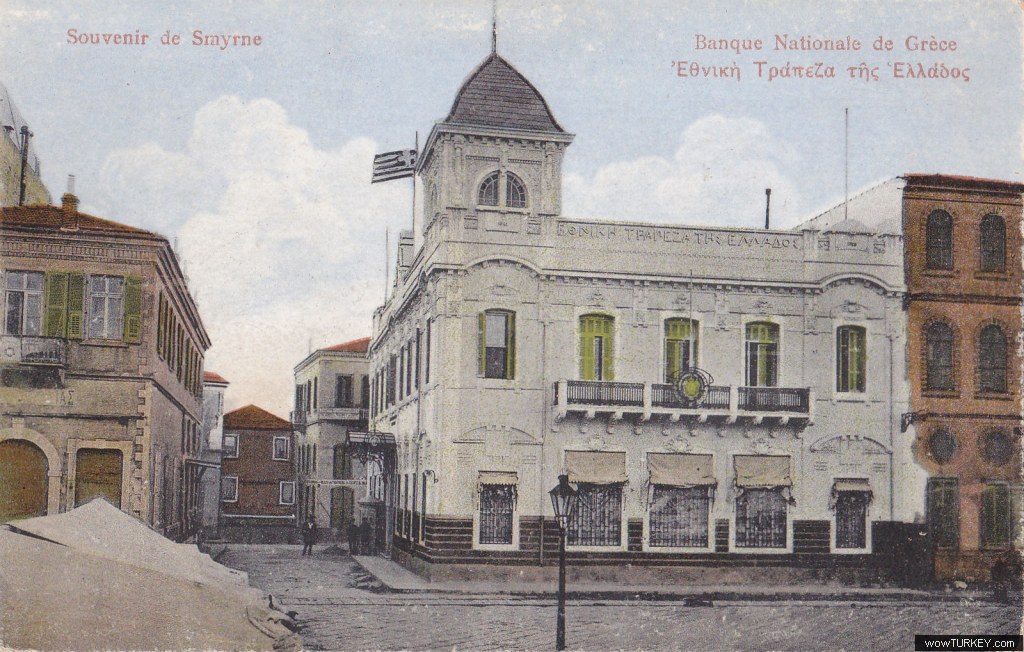
14.12.1983 - 23.01.1989 Period
The Ministry of Culture and Tourism was merged with the Decree Law No. 187 published in the Official Gazette dated 14.12.1983 and numbered 18251 and was renamed as Ministry of Culture and Tourism . Said Decree Izmir Province Culture and Tourism Directorate has been established.
24.01.1989 - 29.04.2003 Period
Decree No. 354 published in the Official Gazette dated 01.24.1989 with the Ministry of Culture and Tourism, changing the name "Ministry of Culture" and "Ministry" has been made into two separate ministries. The Izmir Provincial Culture and İzmir Provincial Tourism Directorates were established separate with this decree-law.
30.04.2003 - Post Term
Published in 29.04.2003 on 25093 numbered official Gazette , with the 4848 numbered law, the Provincial Culture and Tourism Directorates that were previously separated were merged and the İzmir Provincial Culture and Tourism Directorate was established .
With the entry into force of Law No. 4848, İzmir Provincial Culture Directorate located in the historical building of İzmir Ethnography Museum located in Konak District Variant Mevkii and İzmir Provincial Tourism Directorate located in the building of Pasaport Mevkii in Konak District are merged and named as İzmir Provincial Culture and Tourism Directorate and started to serve the community .
History of Provincial Directorate Service Buildings
Passport Service Building
The big fire that started in the Basmane district on 13 September 1922 destroyed more than 20,000 buildings in an area of 2,600,000 square meters, covering three quarters of the city. Most of the Levantine neighborhoods in the city were destroyed and some of the structures on the Belle Vue (Kordonboyu) are saved.
One of the buildings not affected by the fire in Izmir is the building which is located in Pasaport and is used as the Provincial Directorate of Culture and Tourism. The two-storey building used as the Greek National Exchange from 1891 to 1919 and used as the Greek National Bank in 1921 and used as the Central Post Office after the occupation. "Art Nouveau" style reflects the reflections.
Art Nouveau (read as Ar nuvo in French meaning '' New Art '') emerged with the slogan ''Art for all, art everywhere'' in the late 19th and early 20th century. Art nouveau is an architectural trend in which decorative ornaments come to the forefront, folds, flower and plant patterns and stained glass are frequently used.
The entrance of the building separates the fields of the floor with 9 Ionic cap and grooved body cast steel columns. Theceilings of the ground floor are decorated with remarkable plaster decorations. Among the ornaments, egg-arrow erasures, palmettes and meandrans were used generously. Gypsum decoration ceiling cores where iron chandelier hangs are the elements that enrich the interior. On the facade of the building, the wrought-iron fence elements, the striking door eaves and the decoration surrounding the jambs are typical examples of the Art Nouveau style.
The first floor is reached with a wooden staircase and there are pleasant of leaf motifs on the stair railings . There are geometric forms at the entrance door. Gypsum ornaments and wrought iron railings on the windows of the first floor of the building are remarkable.
The building, which was used as Package Post Office for many years, was allocated to Provincial Tourism Directorate in 1996 and as a result of a 2-year restoration process, it was put into service as Provincial Tourism Directorate in July 1998. During the restoration work of the building, which is within the scope of the second degree site, attention has been paid to the renovation of everything from floor slabs to ceiling decorations. Besides the fact that the physical structure of the building was repaired according to its original structure, the office materials to be used in the service building were chosen carefully and wood and light furniture which would be suitable for the historical texture of the building were preferred .
The building was given the '' RESPECT FOR HISTORICAL RESEARCH / LOCAL PROTECTION AWARD 2004 '' by the Metropolitan Municipality of Izmir.
Variant Service Building
The building, located at Halit Rifat Pasa Caddesi, No: 3, Varyant-Konak, was built in the 19th century in a Neo-classical style on a sloping terrace. The building was built in 1831. Used as Roch Hospital; It is known to have been repaired by the French in 1845 and converted into a nursing home for poor Christian families. The same building was later used as the service building of the Public Health and Health Directorate.On 2 December 1984, the museum was given to the Ministry of Culture and Tourism in order to regulate it as Ethnographic Museum .
The museum building was built on three floors as a ground floor, the first and second floors were showrooms, and the third floor served as a warehouse, laboratory, photo studio and office .
In the exhibition of the museum part, it is aimed to give the sections of İzmir and its region from the social life of the 19th century. For this reason, together with industrialization, our handicrafts such as tinism, navalism, pottery, eyeleting, wood-printing, carpet weaving, roving, felting and seraciye have been exhibited.
Today, the first two times as the Ethnography Museum continues to function, but on the 3rd floor are the Provincial Directorate units.